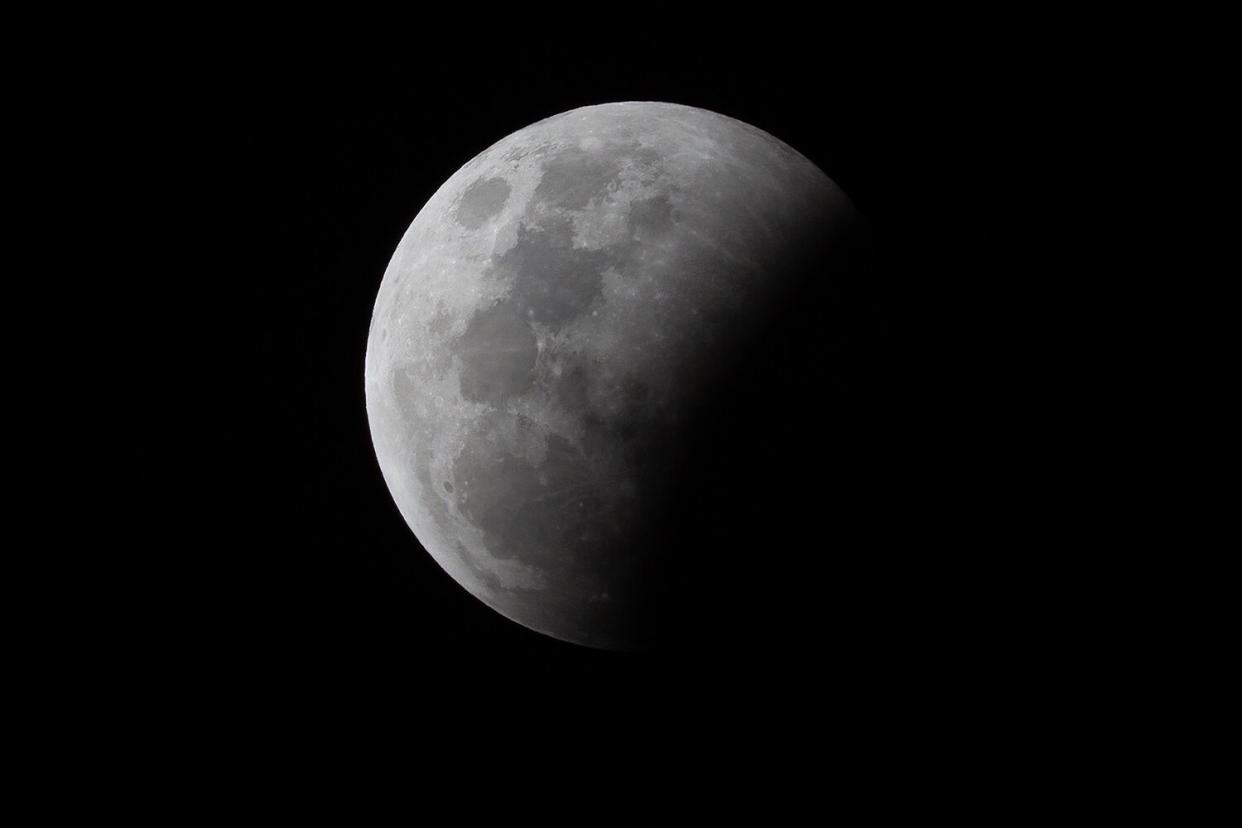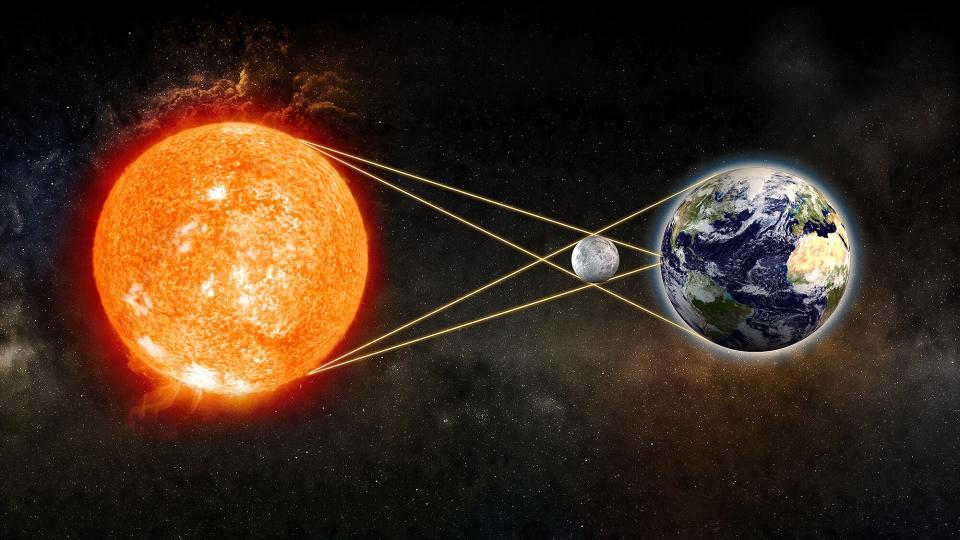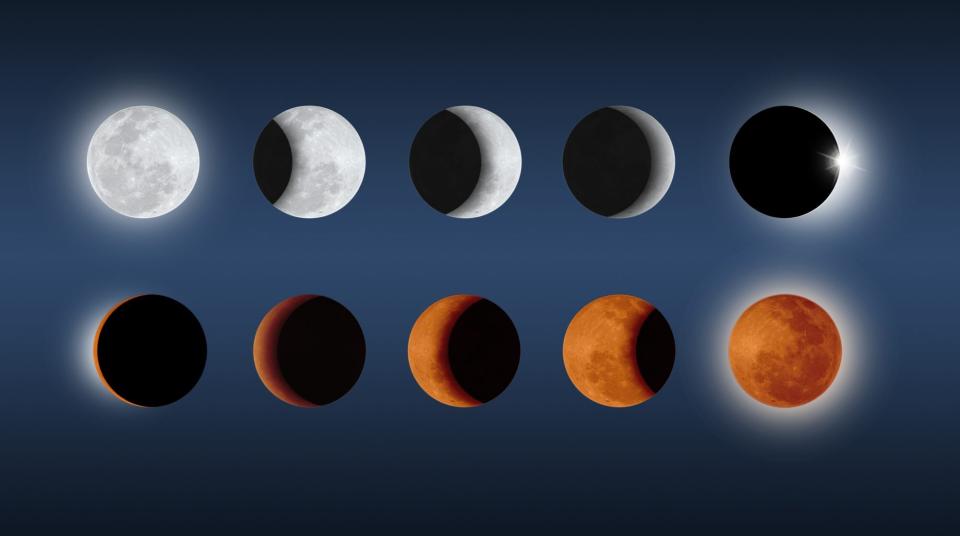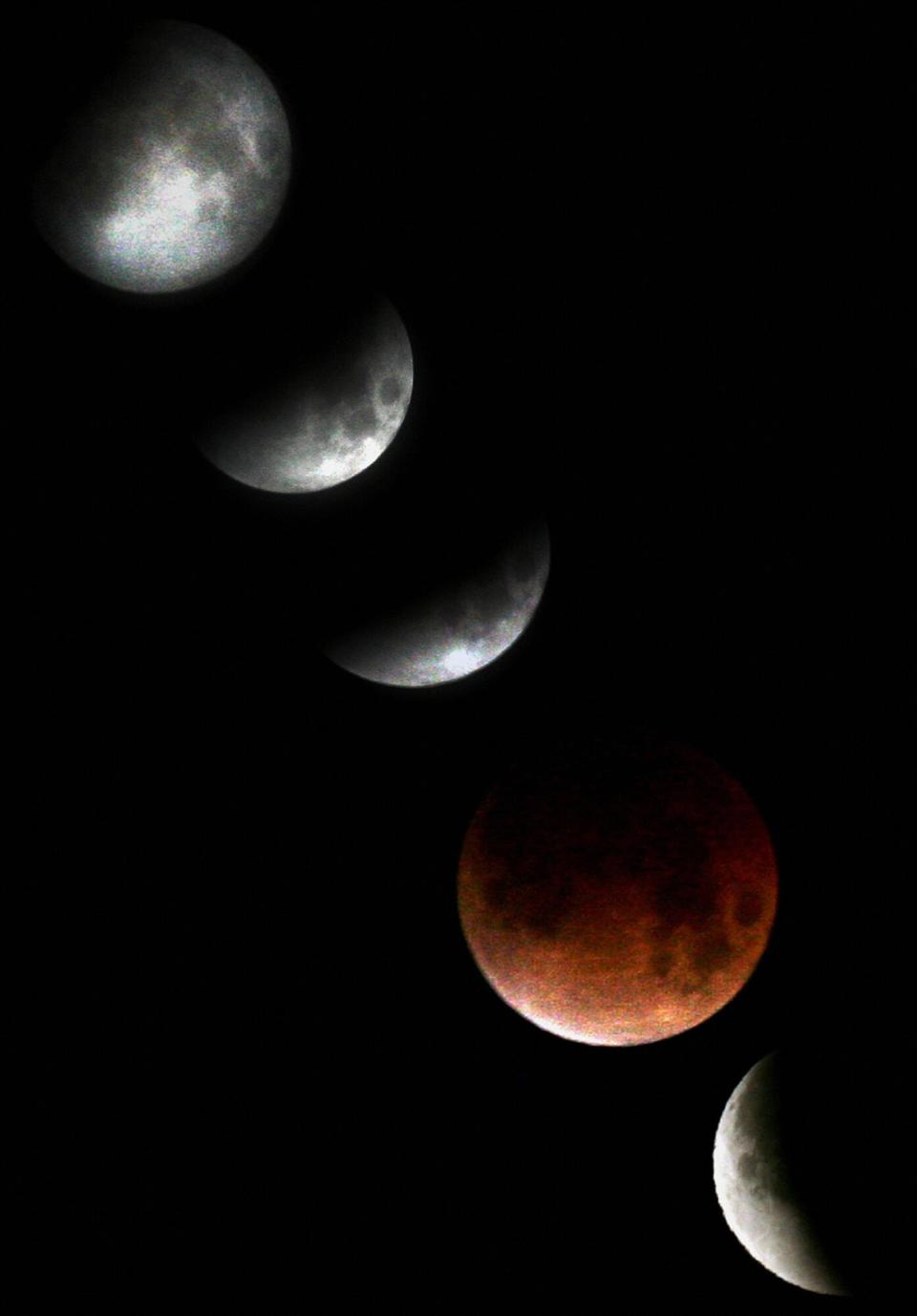The Longest Partial Lunar Eclipse of the Century Is Approaching: When It Will Peak and How to Watch

Getty
Attention all lunar lovers!
A marvelous moon phenomenon will greet patient sky observers during the early morning of Nov. 19 at 4:02 a.m. as a partial lunar eclipse is expected to peak, making it the last lunar eclipse of the year.
You definitely won't want to miss this spectacular site, which will be visible in all 50 states, because it will be the longest partial eclipse in 580 years, according to Indiana's Holcomb Observatory. It's predicted to last 3 hours, 28 minutes, and 24 seconds, and the full eclipse will be for 6 hours and 1 minute.
"Partial lunar eclipses might not be quite as spectacular as total lunar eclipses – where the moon is completely covered in Earth's shadow – but they occur more frequently," said NASA. "And that just means more opportunities to witness little changes in our solar system that sometimes occur right before our eyes."
RELATED: NASA Will Test 'Planetary Defense' System by Shooting a Rocket at an Asteroid

Getty
A partial lunar eclipse occurs when the moon passes into the southern-most part of the Earth's shadow, darkening the moon. A full lunar eclipse happens when the sun, moon, and Earth are completely in-line with each other — "anything less than perfection creates a partial lunar eclipse or no eclipse at all," wrote Space.com.
North America will be the best place to see the entirety of the eclipse, where approximately 97% of the moon's face will be covered by the deepest part of Earth's shadow, according to EarthSky.org. This occurs at maximum eclipse.
RELATED: NASA Confirms the Presence of Water on Sunlit Surfaces of the Moon for the First Time
What exactly will earthlings witness during this out-of-this-world event? Until the moon reaches its peak eclipse, celestial spectators will start to notice a slight dimming of the moon when "the full shadow of the Earth begins falling on the upper part of the Moon at 2:18:41 a.m. EST," according to NASA. Viewers will witness the arc of the shadow wrap around the moon until its 4:02 a.m. EST peak, leaving only a sliver of the left side of the Moon shine in the partial shadow of the Earth.

lunar eclipse creative
Viewers might expect the moon to turn completely black due to Earth's shadow, but they'll experience a sight even greater. Due to Earth's atmosphere, the moon will take on a reddish-brown color resulting in a reflection of Earth's sunrises and sunsets.
After the eclipse reaches its peak, the shadow will gradually start to move towards the lower right side of the moon. The end of the eclipse will occur around 7:03 a.m. EST when the moon has completely emerged from the Earth's partial shadow. During this time, NASA says the brightening of the moon "will be difficult to notice, especially since morning twilight will begin at 5:54 a.m."
RELATED: Super Pink Moon: See Photos of Last Night's Pink Supermoon Across the World
The eclipse happens in five main stages and will appear differently during each. The first stage is when the moon enters penumbra, "when the moon's leading edge enters the pale outer fringe of Earth's shadow: the penumbra," according to Space.com. The second stage occurs when the moon enters umbra, when the "moon's leading edge slips into the umbra, where no direct sunlight reaches." This marks the beginning of the partial eclipse.

BORYANA KATSAROVA/AFP via Getty Images
Phase three is maximum eclipse when the moon gives off its reddish glow. Phase four occurs when the moon leaves umbra, followed by phase five when the moon leaves penumbra – and the moon will appear as bright as ever.
Although North America will receive the best views, the partial lunar eclipse will be visible in eastern Australia, New Zealand, and Japan. "Observers in western Asia, Australia, and New Zealand miss the early stages of the eclipse because they occur before moonrise," EarthSky.org reported. "Similarly, South America and Western Europe experience moonset before the eclipse ends." Africa, the Middle East, and western Asia won't be able to watch the eclipse at all.
RELATED: Harvest Moon 2021: See Photos of the September Spectacular Around the World

Peter KovalevTASS via Getty Images
Following the October Hunter's Moon, November's full moon is traditionally recognized as the Beaver Moon. According to the Old Farmer's Almanac, "Beavers can be seen along the banks of rivers and streams, collecting wood to shore up their lodges and dams before the ice sets in," which was the inspiration behind this month's full moon title. It's also commonly referred to as the Frost Moon because November "signals the time when bitter hard frost's become more frequent," stated the publication.
The Beaver Moon's partial lunar eclipse will mark the second lunar eclipse of 2021, following the Super Flower Blood Moon in May.

